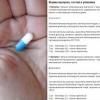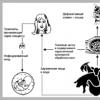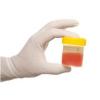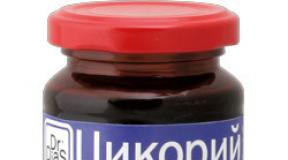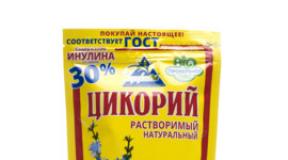World Bank World Development Indicators. The World Bank. Basic indicators of sustainable development
Russia has come close to the top 10 economies in the world in terms of GDP, according to new data from the World Bank. In terms of GDP, taking into account purchasing power parity (benchmark of the May decree), Russia remains outside the top five
Photo: Vitaly Ankov / RIA Novosti
Russia overtook South Korea and rose from 12th to 11th place in the ranking of economies by GDP in 2017, according to updated data from the World Bank. Over the year, Russian GDP in dollar terms at current prices increased by almost $300 billion, from $1.28 trillion to $1.58 trillion. South Korea's GDP rose from $1.41 trillion to $1.53 trillion.
Russia in this list is far ahead of its three BRICS partners - China (2nd), India (6th) and Brazil (8th), Brazil is the closest with a margin of $478 billion.
In the top 10 economies, there were only two changes: India overtook France to sixth place, and Brazil overtook Italy to eighth ( see infographic).

The World Bank relies on official Rosstat data, which includes Crimea and Sevastopol. “Based on these data, the World Bank does not intend to make any judgments regarding the legal or other status of the affected areas,” the institute said. In 2016 (latest available data), the total GRP of Crimea and Sevastopol amounted to approximately 380 billion rubles, or $6 billion at the current exchange rate.
Fight for a place in the top five
More suitable for international comparisons is GDP at purchasing power parity (PPP, equalizes the purchasing power of currencies different countries). It is by this indicator that Russia should enter the top five countries by 2024, Vladimir Putin. By September 1, the Ministry of Economic Development and the Ministry of Finance were instructed to develop a plan to fulfill this task.

At the end of 2017, Russia increased its GDP at PPP at current prices from $3.64 trillion to $3.75 trillion, according to the World Bank data, but remained, like a year ago, in sixth place. Fifth is Germany, behind which Russia is $445 billion behind.
The lag behind Germany is 4-5%, the task is to ensure that over the next six years the growth of the Russian economy by 4% exceeds the growth of Germany, in May the minister economic development Maxim Oreshkin. “The German economy is not an economy that is growing at a superfast pace. Therefore, we must, of course, show higher rates of economic development and bypass it in this rating,” the minister said.
According to Rosstat, Russia's GDP grew by 1.5% in 2017. This estimate can be improved by 0.3 p.p. due to the recent revision by Rosstat of the dynamics of industrial production for last year, reported the Ministry of Economic Development on July 12. In 2018, GDP growth will be 1.9%, in 2019 - 1.4%, and from the latest macro forecast of the Ministry of Economic Development. The agency updated it, taking into account the April expansion of US anti-Russian sanctions, the tasks set by the May decree, as well as the increase in the VAT rate from 2019, which will lead to an additional increase in prices.
Growth was supported by easier access to loans, faster access to electricity, facilitation of international trade, and procedures for registering property. Over the past four years, Russia has risen in the ranking by 65 positions.
“If last year we had a somewhat negative trend, this year we managed to reverse the trend, and the rating for Russia has grown significantly,” Maxim Oreshkin.
In 2016, the compilers of the rating updated the calculation methodology, introducing confusion. In 2015, Russia was ranked 51st in the Doing Business rating, or 36th according to the new methodology, in 2016 it was 40th, down four positions. This time there can be no misunderstandings - a net increase of five positions.
The World Bank's Doing Business Consolidated Ranking includes countries' performance on a number of parameters, the totality of which demonstrates the ease of starting and doing business in each country. The ranking includes 190 states, the position of which depends on indicators of more than a dozen sub-indices: starting a business, obtaining a building permit, connecting to electricity networks, accessing loans, registering property, etc. The ranking helps countries focus on areas where they have identified shortcomings, and investors to determine in which country it will be more profitable to invest their money.
Where rushed
A key indicator of growth is the ease of access to loans for entrepreneurs. In this direction, the Ministry of Economic Development (MED) implemented several programs at once during the year. For example, "Six and a half" - a program developed by the Ministry of Economic Development in conjunction with and implemented by the federal corporation for the development of small and medium-sized businesses. The success of the "Six and a Half" is largely the personal merit of the Minister of Economic Development Maxim Oreshkin.
“Russia has entered the top 10 countries in the world in terms of connecting to networks and in the top 30 in terms of registering property, executing contracts, registering enterprises and lending,” the minister said at a meeting of Russian President Vladimir Putin with members of the government.
Thanks to the Six and a Half program, entrepreneurs can take preferential loans at a rate of 10.6 percent per annum (for small businesses) and 9.6 percent for medium ones. Banks participating in the Six and a Half program get the opportunity to refinance at the Bank of Russia at a rate of 6.5 percent per annum - hence the name of this program. 45 banks participate in Six and a Half, including the largest banks in the country.
World Bank experts note an improvement in the situation with international trade. In many ways, the growth in this indicator is due to the launch of a new port in the Gulf of Finland, which increased competition in the market and reduced the cost of customs clearance in the Big Port of St. Petersburg.
Photo: Dmitry Azarov / Kommersant
The third important factor is a significant simplification of the property registration process. According to this sub-index, Russia ranked 12th out of 190, and the total waiting time for registering property decreased from 52 days in 2004 (that was when the World Bank included this sub-index in the ranking) to 13 days. (a subordinate body of the Ministry of Economic Development), which formalizes the rights to property, posted on its website a list of documents necessary for registering property, opened a hotline. This allowed to significantly reduce the registration time: for example, in Moscow and St. Petersburg - up to 7 days.
In addition, the Ministry of Economic Development is implementing the project "Improving the Efficiency of Rosreestr": a bonus system is being introduced in the department in order to reduce corruption risks. The Ministry of Economic Development also plans to eliminate legislative obstacles that hinder the work of the department.
Consistently high positions of Russia in the sub-index "access to power grids" - 10th place out of 190 countries. World Bank experts note the reliability of power grids, the transparency of the established tariff and its low cost. “To connect electricity in Russia, you will have to go through only three procedures, compared to five on average in the world,” the report says. It takes 80 days to connect an enterprise to the network, which is average among countries (OECD).
Russia also has a high result in terms of the “enforcement of contracts” indicator. These are the procedures, the time spent and the costs involved in debt litigation. Russia here took 18th place in the world. WB experts note the speed of making decisions, which is largely determined by the progressive electronic judicial system. According to WB estimates, the average commercial litigation in Russia lasts about 337 days, compared to 578 days in OECD countries. The cost of litigation in Russia is significantly lower than in OECD countries. The average size of an arbitration claim in Russia is 1.075 million rubles, and the cost of litigation does not exceed 15 percent of the average size of a claim, that is, about 162 thousand rubles, which is one and a half times less than the same indicator among OECD countries.

Photo: Evgeny Pavlenko / Kommersant
Finally, according to the World Bank, you can now start your own business in Russia in just 10 days using four procedures. According to this indicator, Russia ranks 28th in the Doing Business ranking. For comparison, 15 years ago, starting a business in Russia required nine procedures and 43 days. The cost of all these procedures has decreased by 12 times.
Where sank
Difficulties, according to WB analysts, in Russia are still observed with a building permit. As an example, the World Bank cites the need to obtain government approval for the construction of a warehouse - it will take 50 percent more time than the world average, but this is a big step forward. In six years, the term was reduced by half. To obtain a building permit in Russia, you will need to go through 15 procedures and spend an average of 231 days, compared to 12.5 procedures in 155 days in OECD countries.
“At the same time, there are areas where we still look very bad. For example, obtaining a building permit, here we have 115th place, and international trade, where we occupy the 100th position,” Oreshkin admits.

Photo: Mikhail Voskresensky / RIA Novosti
Indeed, despite a number of successful measures, including the modernization of the customs infrastructure, the introduction of electronic document management, the cost of processing customs documents is still high. The average time to export a product is 72 hours versus 12.7 hours in OECD countries. Export and import costs in Russia are also several times higher than those of the OECD. For example, the customs duty on imports in Russia is $400, while in OECD countries it is $111.6.
Negative dynamics is observed in the "taxation" sub-index. According to this indicator, Russia dropped by seven positions and took 51st place among 190 economies. During the year, an entrepreneur will pay seven types of taxes (versus 11 in OECD countries), but will spend an average of 168 hours on it, compared to 161 hours in the OECD. The share of taxes as a percentage of income in Russia is also higher - 47.6 percent versus 40.1 percent in the OECD.
Neighbors and rating leaders
France, Holland, Switzerland and Japan became new competitors and at the same time neighbors of Russia in the Doing Business ranking. Among major European economies, Russia has overtaken Belgium and Italy. Russia also surpassed all its partners in the unification: Brazil was in 125th place, India took 100th position, China - 78th, South Africa - 82nd.
At the bottom of the ranking are Somalia, Eritrea, Venezuela, South Sudan and Yemen. The most optimal country for doing business experts of the World Bank is New Zealand. In second place - Singapore, in third - Denmark. In fourth position is South Korea, which managed to bypass Hong Kong. The top ten also includes the USA, Great Britain, Norway, Georgia and Sweden.
New Frontiers
During a meeting with the President of Russia, Maxim Oreshkin stressed that the rating is not an end in itself, it helps countries to realize where they have identified problems and help with their solution. The main task of the Ministry of Economic Development is to create favorable conditions for investment and doing business in Russia, and the department already has a recipe for how to do this.
“The bill that was prepared by our ministry has passed zero reading in the parliament and is being prepared for approval by the government. The main task within the framework of this bill is the transition from the principle of punishment to the principle of prevention and the creation of smart risk assessment systems,” the minister said. A paradigm shift in the control and oversight bodies, according to Oreshkin, is the second main goal for the near future.
The Ministry of Economic Development is responsible for the growth of the Russian economy. Maxim Oreshkin headed the department on November 30, 2016. Prior to that, he served as Deputy Minister of Finance. According to the latest forecasts, Russia's GDP will grow by 2.1 percent in 2017.
To improve the business climate in Russia, it is necessary to extrapolate successful cases and practices from federal centers and major cities throughout Russia. In this direction, the MED together with (ASI) continues to work actively, despite the progress already made. As an example, we can cite a program to increase labor productivity, which the Ministry of Economic Development is implementing jointly with. During the meeting, the head of the department said that within the framework of this program, 500 million rubles would be allocated from the budget. The program will be implemented during 2018-2020, six regions are participating in the pilot project.
Finally, according to Oreshkin, it's time for Russia to abandon the tilt towards technical procedures and shift the focus to the development of human capital - the main factor in the competitiveness of the economy in the 21st century.
4 indicators for waste,
Use of transport.
A minimum list of basic indicators is offered to countries for testing and preparation of national programs.
An example of the structure of the system of indicators "topic - subtopic - indicator" for Russia is given in section 2.1.5., Table 3.
2.1.2. System of environmental indicators of the Organization for Economic Cooperation and Development (OECD).
The system of environmental indicators of the OECD has received wide recognition in the world. Members of this organization are 30 economically developed states of Europe, North America, the Asia-Pacific region (Austria, Belgium, Great Britain, Germany, Greece, Denmark, Spain, Italy, Australia, Canada, USA, Mexico, Poland, etc.).
OECD countries have been developing an environmental indicator program since 1990 based on the following requirements:
Harmonization of terminology and conceptual frameworks common to OECD countries;
Identification and definitions of indicators according to the following criteria.
The criteria for selecting indicators are:
1) relevance to the policy being implemented,
2) measurement of these indicators in most countries,
3) their regular use in analytical reviews and studies on the environment.
Indicators are used for three main purposes: to monitor progress in environmental indicators; better integration of environmental interests into sectoral policies; better integration of environmental interests into economic policy.
The types of OECD indicators and their scope are shown in fig. one.

Rice. 1. Types and scope of indicators of the Organization for Economic Co-operation and Development (OECD)
It is expected that the OECD indicator system will provide an opportunity to clarify the links between the state of the economy and environmental protection, which will increase public awareness and contribute to the implementation of integrated policies.
The OECD indicators are based on the PDS (pressure-state-response) model. The DSR model (Figure 2) identifies causal relationships between economic activity and environmental and social conditions and helps decision makers and the public to see the relationship between these areas and develop policies to address emerging issues. Therefore, it is a mechanism for selecting and organizing indicators in a convenient form. However, this does not mean ignoring the more complex relationships in ecosystems, as well as economic-environmental and socio-ecological relationships.
Treatment of natural and waste water" href="/text/category/ochistka_estestvennih_i_stokovih_vod/" rel="bookmark">waste water treatment, changes in agricultural productivity of arable land. Impact indicators also include temporal parameters and indices of impact on aspects of human well-being. Broadly notable examples- gross national product (GNP), human development index (HDI), which is an indicator of the quality of life.
Response indicators reflect the reaction of society to environmental problems. They are associated with collective and individual actions and reactions aimed at mitigating, adapting or preventing negative influence on the environment caused human activity or to the conservation of nature and natural resources. Examples of indicators of public response are: environmental spending, environmental taxes and subsidies, pricing structure, market share of environmentally friendly goods and services, pollution reduction rate, level of product recycling.
The OECD DSR model has formed the basis of many other indicator systems, in particular Eurostat's European Impact Indicators. OECD environmental indicators are regularly used in environmental reviews and other analytical work; they can be used to monitor the process of integrating economic and environmental decision-making, analyze environmental policy and evaluate environmental performance. In addition, they are used in the wider OECD program on sustainable development indicators.
2.1.3 Indicator system for improving environmental management in Central America.
The system of indicators developed to improve environmental management is built in the same way as in the OECD scheme, (i.e. using the same four types of indicators: pressure, state, impact, response) built in Central America (“Developing indicators. Experience from Central America” The World Bank, UNEP, CIAT 2000). The research was carried out by the World Bank in cooperation with the United Nations Environment Program (UNEP) and the International Center for Tropical Agriculture (CIAT). Distinctive feature project - the presentation of indicators in the form of geographic information systems, which makes the material more visual and facilitates planning and decision-making. The indicators reflect all spheres of society's functioning: economic, environmental, social, environmental-economic, socio-economic, socio-ecological, and their interaction. To fit the institutional structure, the indicators are organized by major development issues - land use, deforestation, fresh water consumption, infrastructure, natural disasters.
The analysis is carried out in three stages: using indices, then basic indicators, and finally additional indicators. In total, 11 indices, 68 basic indicators and 114 additional indicators were identified, which should contribute to the analysis for decision-making. Indexes fix the problem and the need for further analysis.
Land - land use index.
Forests - risk index for forests.
Water - index of vulnerability of water resources.
Biodiversity - the degree of land development.
Marine and coastal resources - risk index for coastal areas.
Atmosphere - an index of greenhouse gas emissions.
Energy is the use of electricity per capita.
Social Development - Human Development Index (HDI).
Economic development - GDP per capita.
Infrastructure - reachability index.
Natural Disasters - Climate Risk Index.
The proposed indexes are used in various studies, in particular, in the annual report of the World Resources Institute (World Resources Institute). The indices are built on a compilation of information on each of the identified problems and objects, such as the HDI, which reflects life expectancy, educational level and income.
The selection of indicators has also been tested for the forestry sector in Central America.
2.1.4 World Bank World Development Indicators
The World Bank can be called the world leader in sustainable development indicators. The World Bank's annual report "The World Development Indicators" makes it possible to evaluate progress towards the goals set by the UN - economic growth and the fight against poverty. The indicators are grouped into 6 sections:
· population,
· Environment,
· economy,
· state,
Key characteristics of the general section used to determine specific indicators in all other sections - population, territory and GDP. All indicators are presented in dynamics since 1980, which makes it possible to analyze long-term world economic trends.
To study and compare the development of the countries of the world, information is analyzed on more than 550 indicators. From the data of the latest report, one can conclude that the global financial crisis of 1997 has begun to be overcome and that there is no progress in reducing poverty in most regions of the world.
Based on the World Development Indicators, since 2000 the World Bank has been issuing a brief "green" reference book ("The Little Green Data Book"). Indicators from the World Bank green guide for Russian Federation for 2000 are given in section 2.1.5.
2.1.5 Systems of indicators of sustainable development for Russia.
The system of indicators "topic - subtopic - indicator" for Russia is shown in Table 2. A total of 42 indicators have been identified, of which the vast majority are calculated on the basis of official statistics and a small part is based on departmental information (Roshydromet) and one-time surveys and assessments.
table2
Basic indicators of sustainable development
Topic | Subtopic | Indicator |
Atmosphere | Changing of the climate | 1. СО2 emission from fossil fuel consumption (Roshydromet data) |
2. Emission of greenhouse gases |
||
Air quality | 3. Concentrations of priority air pollutants in urban areas (Roshydromet data) |
|
4. Issue harmful substances, total and by hazard classes |
||
5. Agricultural land |
||
6. Use of mineral fertilizers |
||
7. Use of pesticides |
||
8. Forested area, in % of the total land area |
||
10. Intensity of deforestation (use of AAC) |
||
Land desertification | 11. Lands affected by desertification (regional assessments, one-time assessments) |
|
Urbanization | 12. Lands of settlements |
|
13. Lands of industry, transport and other non-agricultural purposes |
||
Fishing | 14. Annual catch of the most important species in the main basins |
|
Fresh water | Amount of water | 15. Annual abstraction of ground and surface water, in % of total available water |
16. The volume of recycled and consistently used water as a percentage of the water intake from water sources |
||
Water quality | 17. Discharge of polluted wastewater into surface water bodies |
|
18. Discharge of pollutants into surface water bodies |
||
biodiversity | ecosystems | 19. Lands of specially protected natural areas (reserves and national parks) |
20. Protected areas, in % of the total area |
||
21. Availability of major selected species (one-off estimates) |
||
Economic structure | Economic indicators/ results | 22. GDP per capita |
23. Share of investment in GDP |
||
24. Capital renewal ratio |
||
25. Labor productivity |
||
26. "True savings" (assessment) |
||
Trade | 27. Balance of trade in goods and services |
|
Financial position | 28. Share of debt in GNP |
|
29. Inflation rate |
||
Consumption and production patterns | Material consumption | 30. Intensity of use of materials (material consumption) |
Energy use | 31. Annual energy consumption per capita |
|
32. Share of renewable energy sources |
||
33. Intensity of energy use (energy intensity) |
||
Education and waste management | 34. Generation of toxic waste (by class) |
|
35. Use and disposal of toxic waste |
||
Transport | 36. Number of cars per 1000 population |
|
The level of well-being of the population | Employment | |
Income distribution | ||
39. Population since cash income below the living wage |
||
40. Provision of the population with housing |
||
41. Specific gravity number of families registered for housing |
||
recreation | 42. Children's health institutions |
A source:
The World Bank indicators from the quick green guide for the Russian Federation are presented in Table 3.
Table 3
Indicators for the Russian Federation from the World Bank Green Brief, 2006
the Russian Federation |
|
Indicator name | Meaning |
Population, mln. | |
Urban population (% of total) | |
GDP, billion dollars | |
GDP per capita, Atlas method (USD) | |
Agriculture |
|
Land area (1000 km2) | |
Agricultural land (% of total area) | |
Irrigated land (in % of land under crops) | |
Use of fertilizers (100 g per 1 ha of arable land) | |
Population density, rural (persons per km2 of arable land) | |
Forests and biodiversity |
|
Forest area (in % of total land area) | |
Annual deforestation (% change) | |
National protected areas, in % of land area | |
Mammals, all species | |
Mammals, endangered species | |
Birds, all species | |
Birds, endangered species | |
GEF Biodiversity Economic Impact Index (0-100) | |
Energy |
|
GDP per unit of energy used (PPP (2000) per unit equivalent) | |
Commercial energy supplies per capita (in kg of oil equivalent) | |
Energy from renewable fuels and waste (% of total) | |
Net energy imports (in % of commercial use) | |
Electricity use per capita (kW) | |
Emissions and pollution |
|
CO2 emissions per unit of GDP (kg per GDP PPP (2000) in USD) | |
CO2 emissions per capita (megatons) | |
Suspended particles in large cities (mg/m3) | |
Passenger cars (per 1 thousand population) | |
Fresh water reserves per capita (m3) | |
Fresh water consumption | |
Total (% of fresh water reserves) | |
Access to treated water sources (% of total population) | |
in cities (in % of the urban population) | |
in rural areas (in % of the rural population) | |
in cities (in % of the urban population) | |
Environment and health | |
The incidence of acute respiratory infections (% of children under 5 years old) | |
Incidence of diarrhea (% of children under 5) | |
Mortality of children under 5 years of age (per 1000 births) | |
Macroeconomic indicators | |
Gross Domestic Savings (in % of GDP) | |
Consumption of fixed capital (in % of GDP) | |
Expenditure on education (in % of GDP) | |
exhaustion energy resources(in % of GDP) | |
Depletion of mineral resources (in % of GDP) | |
Net depletion of forest resources (in % of GDP) | |
Damage from CO2 emissions (in % of GDP) | |
True (domestic) savings (in % of GDP) |
Russia overtook South Korea and rose from 12th to 11th place in the ranking of economies by GDP in 2017, according to updated data from the World Bank. Over the year, Russian GDP in dollar terms at current prices increased by almost $300 billion, from $1.28 trillion to $1.58 trillion. South Korea's GDP rose from $1.41 trillion to $1.53 trillion.
Russia in this list is far ahead of its three BRICS partners - China (2nd), India (6th) and Brazil (8th), Brazil is the closest with a margin of $478 billion. only two changes: India overtook France to sixth place, and Brazil overtook Italy to eighth (see infographic).
The World Bank relies on official Rosstat data, which includes Crimea and Sevastopol. "Based on these data, the World Bank does not intend to make any judgments regarding the legal or other status of the affected territories," the institute said. In 2016 (latest available data), the total GRP of Crimea and Sevastopol amounted to approximately 380 billion rubles, or $6 billion at the current exchange rate.
Fight for a place in the top five
More suitable for international comparisons is GDP at purchasing power parity (PPP, equalizes the purchasing power of currencies of different countries). It is according to this indicator that Russia should enter the top five countries by 2024, Vladimir Putin set the task. By September 1, the Ministry of Economic Development and the Ministry of Finance were instructed to develop a plan to fulfill this task.

At the end of 2017, Russia increased its GDP at PPP at current prices from $3.64 trillion to $3.75 trillion, according to the World Bank data, but remained, like a year ago, in sixth place. Fifth - Germany, from which Russia lagged behind by $ 445 billion. The gap from Germany is 4-5%, the goal is for the growth of the Russian economy to exceed the growth of Germany by 4% over the next six years, Economic Development Minister Maxim Oreshkin explained in May. “The German economy is not an economy that is growing at a superfast pace. Therefore, we must, of course, show higher rates of economic development and bypass it in this rating,” the minister said. According to Rosstat, in 2017, Russia's GDP grew by 1.5%. This estimate can be improved by 0.3 p.p. due to the recent revision by Rosstat of the dynamics of industrial production over the past year, the Ministry of Economic Development reported on July 12. In 2018, GDP growth will be 1.9%, in 2019 - 1.4%, follows from the latest macro forecast of the Ministry of Economic Development. The agency updated it, taking into account the April expansion of US anti-Russian sanctions, the tasks set by the May decree, as well as the increase in the VAT rate from 2019, which will lead to an additional increase in prices.





